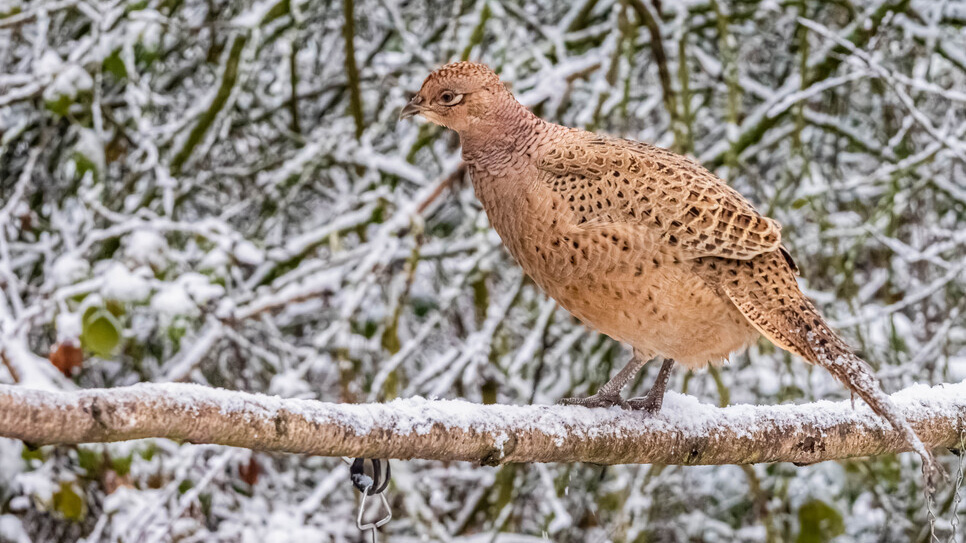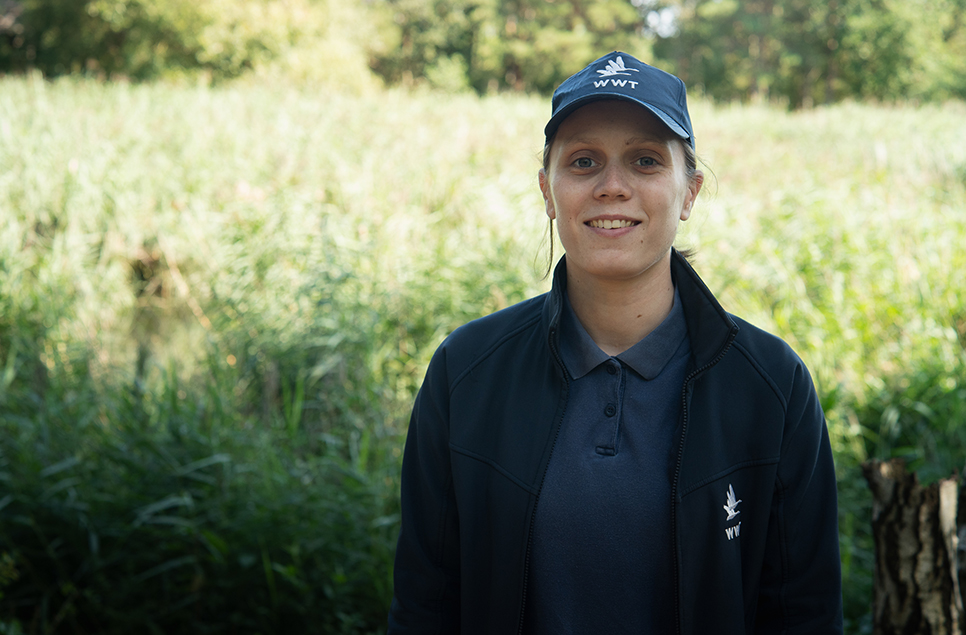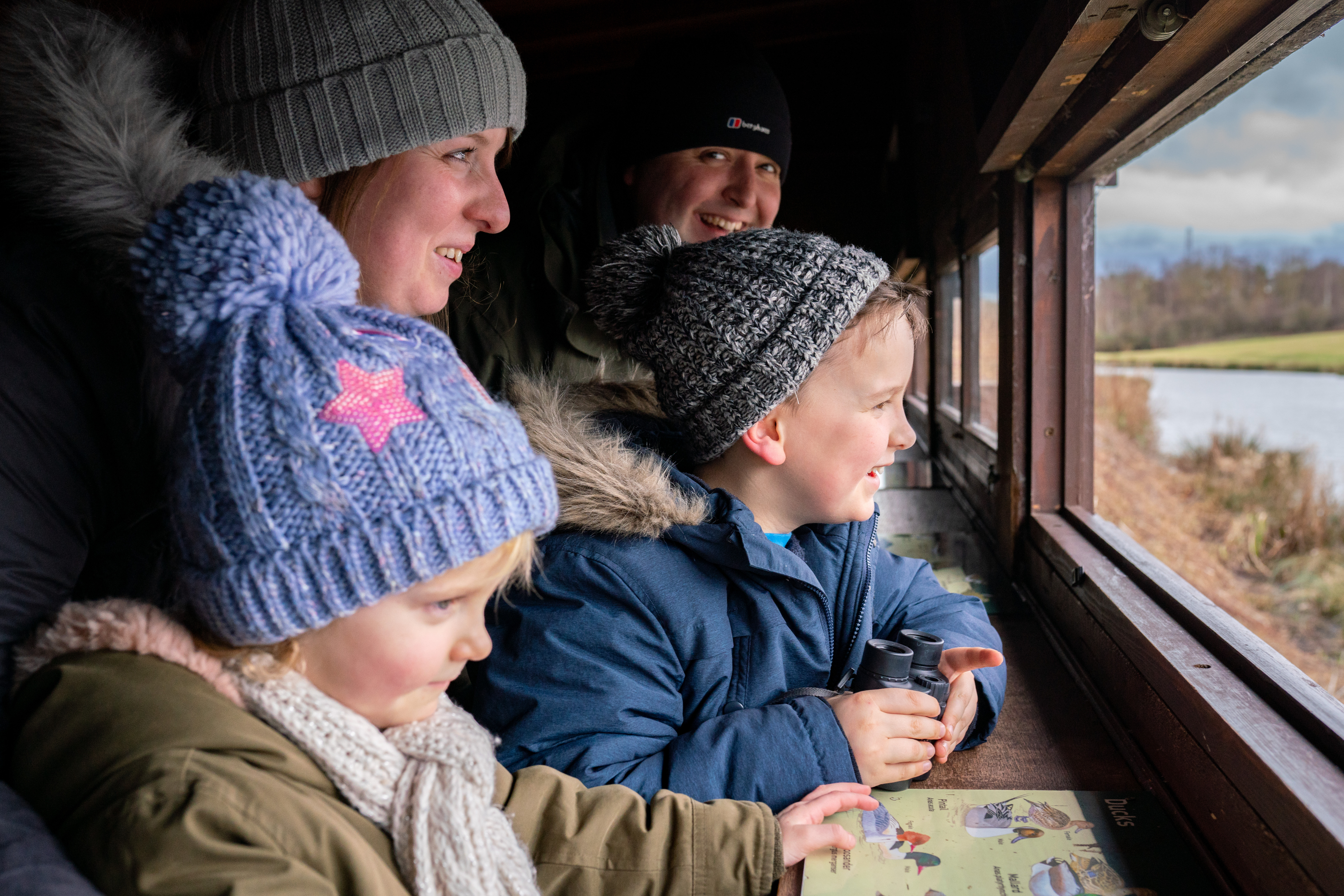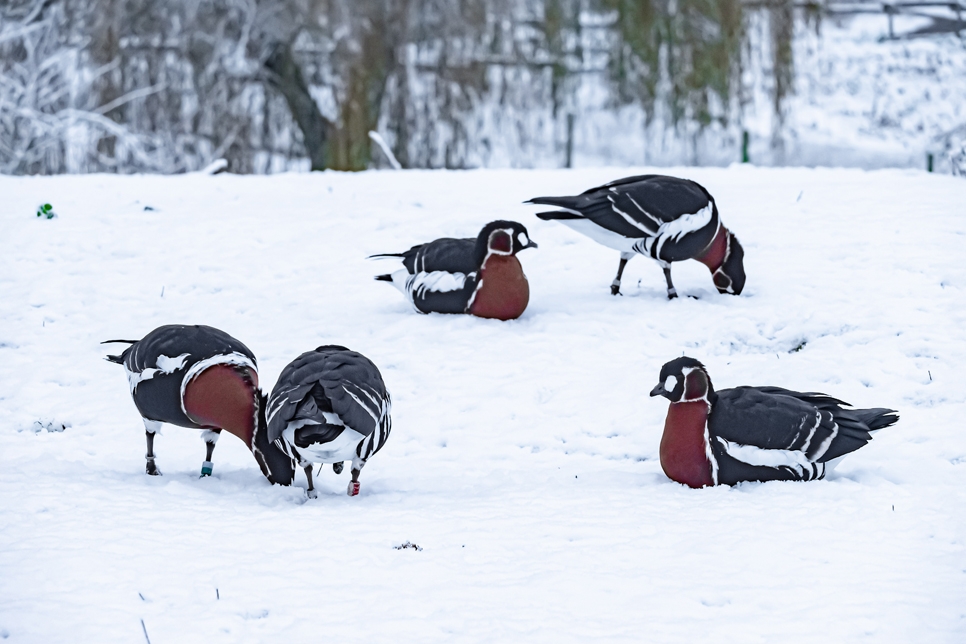Keeping up with willow tit
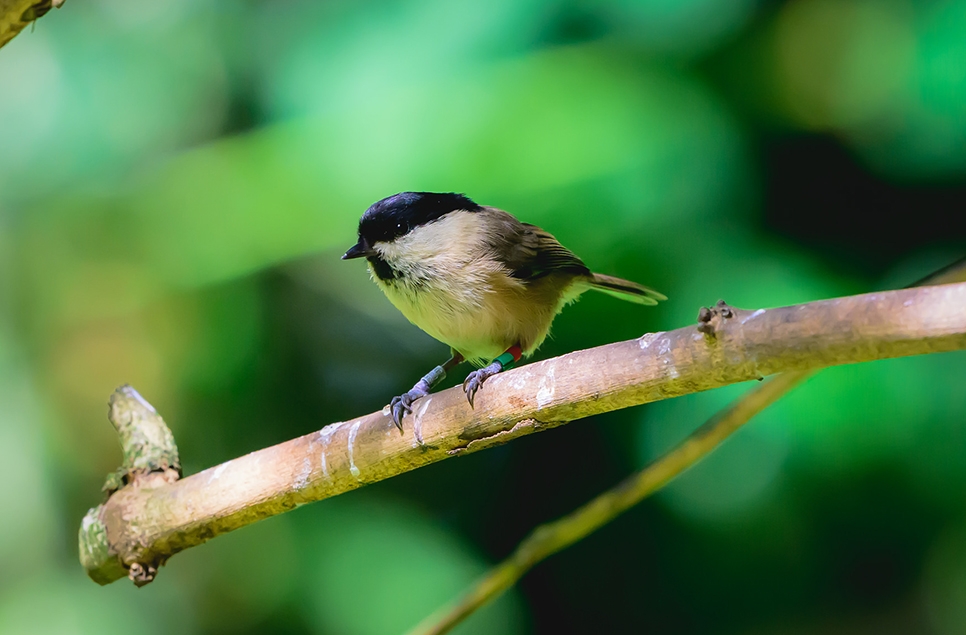
Willow tit are a key wetland species for us here at WWT Washington. Their presence around our reserve offers us a vital insight for our ongoing research into this declining species.
Populations of willow tit have dramatically declined in the UK, with a decrease of 83% between 1995 and 2017, and they are now classed as a red-listed species in the UK. This decline is believed to be due to habitat loss, nest hole competition from other birds, such as blue tit, and nest predation from great-spotted woodpecker.
WWT Washington Wetland Centre are incredibly fortunate to have a small population of willow tit on the reserve, and continue to manage the woodlands and other habitats to encourage them to stay.
Reserve warden Kate has given us a great insight into the work they've been doing so far this year and how the breeding season has been going at WWT Washington.
Call-back survey summary
A call-back survey, also known as a call-response survey, is a method used in bird surveys to detect birds, especially those that are secretive or difficult to observe visually. It involves playing recordings of bird songs or calls to get a response from birds in the area, increasing the likelihood of detection. This type of survey provides us with valuable data on willow tits' presence and distribution around our reserve.
Overall we conducted three call-back surveys over March and the start of April this year, two of which found willow tit individuals. The first on 20 March when a pair of birds flew around the dragonfly ponds at the end of the call-back survey and begin to sing. One of these birds was confirmed as an un-ringed bird.
On the last survey, on 09 April, a willow tit pair immediately began singing in response to the call-back being played on Wader Lake footpath. One of the birds-the red and green (pictured above by visitor Mark Whitelock) ringed bird-appeared to do all of the singing and the second, an un-ringed bird, only used regular calls (chay-chay) or contact calls. Both birds spent time along Wader Lake footpath and the gully, where they were still singing at the next call-back point.
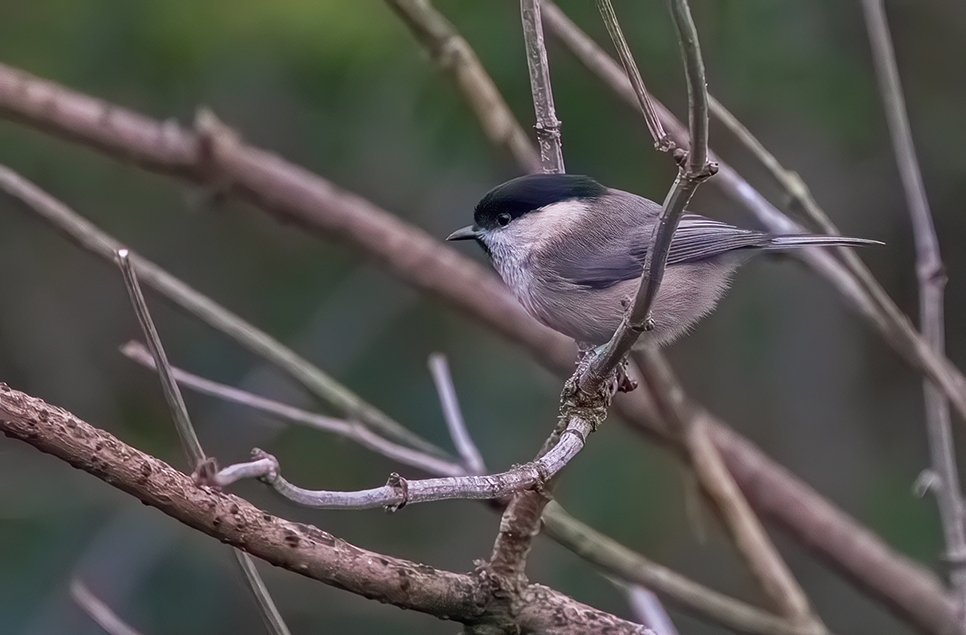
Reserve team sightings
The WWT Washington reserve team have been recording willow tit sightings on a paper map from starting our call-back surveys at the end of March (although there are more sightings from earlier in the year and the public citizen survey still to summarise). During this time, we recorded eleven sightings of willow tit from 20 March through to 25 April, followed by a gap in sightings until mid-May where we’ve started recording them again and are now seeing lots of juvenile activity.
Of the sightings in late March to late April, mainly the un-ringed bird and red and green bird were seen (they were assumed to be a pair, with red and green suspected as male due to being recorded as singing often within the pair, which is usually a behaviour attributed mainly to male willow tits). From our map, several flight paths showing how the birds move around the site have begun to be identified.
In the earlier sightings, particular interest was shown in the gully area, with a pair of birds being noted as very vocal and investigating pollarded willow trees with large deadwood stumps around the gully and area below our Islands exhibit on 16 April. The other area of interest were at the Amphibian Ponds, Fen Carr and Top Meadow Ponds area on the East of the site, with lots of birds flying back and forth through this area on several occasions.
After about 3 weeks without sightings from reserve staff, the willow tits reappeared on 26 May, when a group of seven willow tits were found (identified via contact calls) in the same gully area recorded on 16 April. This group included several juvenile birds (suspected up to 5) who were quite happy perching a meter or two overhead and staring down without alarm calling at very happy reserve wardens! (Image below by visitor John Tindle)
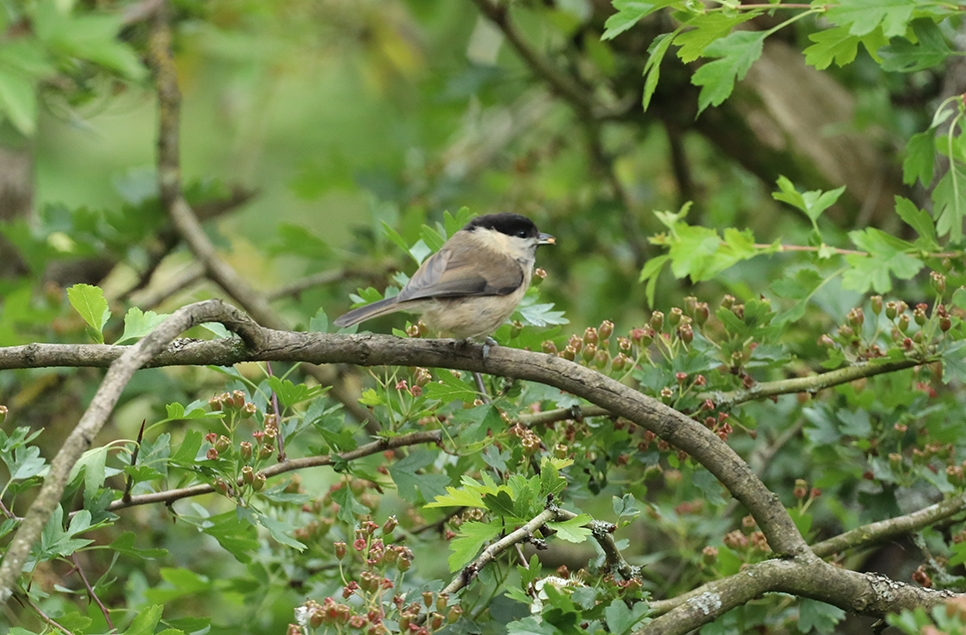
The group of birds were flitting among elder trees, willow trees and the scrubby understory of the gully and neighbouring exhibit to Islands exhibit in the collection area. In this area there are lots of young trees with good bramble growth and understory cover around them. Although very mobile, this group of birds remained in the area all day and almost exclusively used contact calls to communicate (this can be heard nicely on the below video from warden Kate). The red and white ringed bird (which had been otherwise absent and was last recorded on site in July 2023) was seen feeding one of the juveniles in the group with willow seed heads gathered from the goat willow tree they were in. There were lots of other tit species with fledglings in the area at the same time, including great tits and coal tits.
While this brood didn't remain in this location past the 26 of April, on the 31 May, two willow tit juveniles of similar size and age were seen at Hawthorn Wood feeding station with an un-ringed adult. Similarly on 2 June, the red and green bird was seen with at least one juvenile at the Lookout feeding station, however more juveniles were implied from the several contact calls that could be heard from the trees above. In both cases, juveniles at the feeding stations initially showed preference to feeding on bird cake feeders and this has also been observed with other tit species’ fledglings, including blue tit species, this year.
Since then, juveniles birds have begun to be spotted elsewhere around the site, including being observed feeding independently at the reservoir. There remains lots of adult and juvenile activity throughout the grounds and reserve, with one adult and 2 juvenile willow tits also spotted in Wet Wood in early July.
Willow tit (presumably adults) continue to be heard doing alarm calls in the middle wood area between the gully area and the Lookout feeding station regularly. It's unclear if there are two separate broods involved as three adult birds have been seen with similar aged juveniles within the space of a week. Even when we think we know what's going on, the Willow tits keep us on our toes! The last studied brood at WWT Washington in 2023 found evidence of extra parental care (i.e three birds were involved in rearing the 2023 brood) and this could be a possibility to consider.

Birds we’ve seen this year
As part of our willow tit project, our team, together with Whitburn Ringing Group and the BTO (British Trust for Ornithology) have been doing ongoing bird ringing sessions at key parts of the year as part of our willow tit project. Here's a round up of which birds our team have spotted.
- Red and green - adult bird, first ringed Feb 2024, suspected male
- Red and black - immature bird (adult in 2026), first ringed Feb 2024 (pictured below by visitor Shaun McNaughton)
- Red and white - adult bird, first ringed Feb 2023, suspected male. Involved as a parent bird in at least two broods of Willow tit fledged on site: a brood of 7 in 2023 and a brood of at least 5 in 2025
- Un-ringed adult/s - a mystery!
- This year’s juveniles - approximately 5 at least!
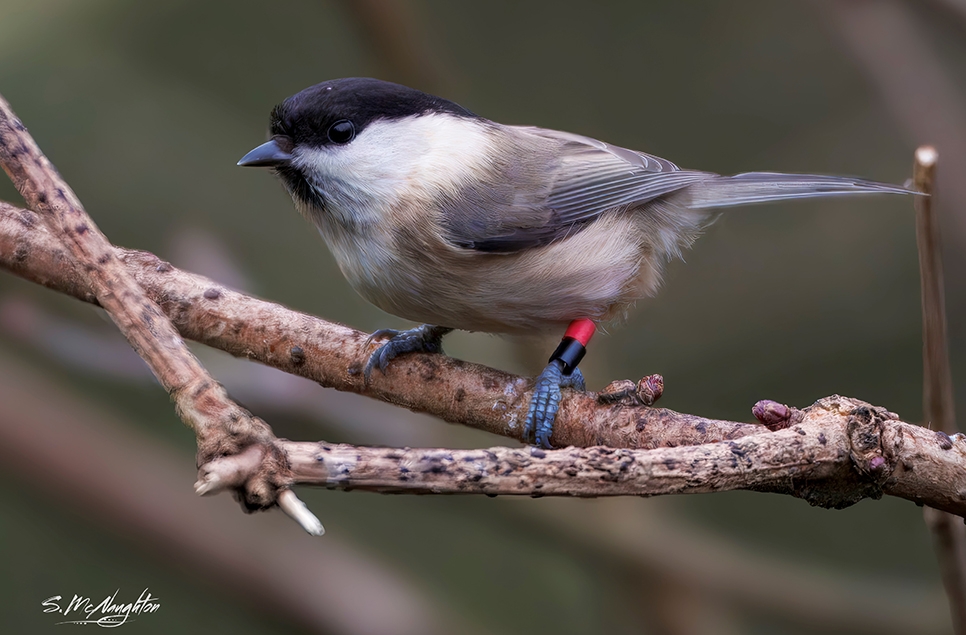
Want to know more about our willow tit project?
If you've been inspired to read more about our ongoing willow tit project, find out more and learn about our ongoing citizen survey.
Tell me more